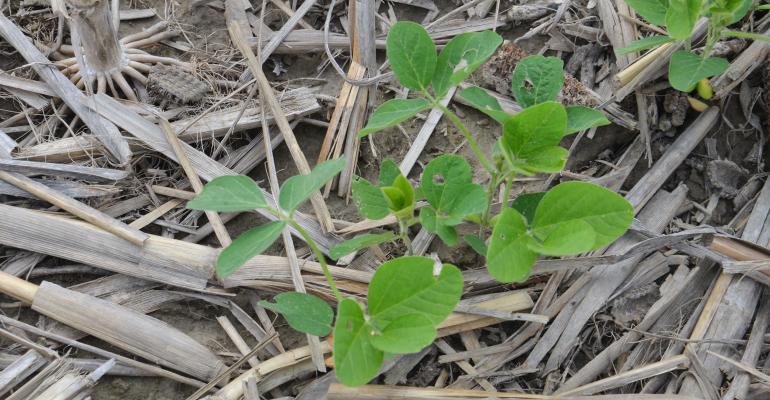Soybean seed insecticide decision a tough call

Soybean Pest Beat: Variety differences complicate the decision.
Oct 04, 2018
I had some soybean seed with insecticide treatment and some without. The treated beans didn’t have bean leaf beetle feeding last spring. Untreated beans did. They were different varieties. Yields were the same. Dad wants to pass on insecticide-treated beans for 2019. How do I convince him that it wasn’t a fair test — the varieties were different. What should we do?
The Indiana certified crop adviser panel answering this question includes Betsy Bower, agronomist, Ceres Solutions, Lafayette; Steve Gauck, sales agronomist, Beck’s, Greensburg; and Dan Ritter, agronomist, Dairyland Seed, Wabash.
Bower: You’re correct. You can’t really compare yield of two different varieties with and without treatment unless in the same field. We know that bean leaf beetle feeding needs to be very substantial to affect yield, especially early in the season.
In the area where I primarily consult, we don’t use much insecticide-treated soybeans because we have found the insecticide doesn’t really help us. We did trial work for at least five years straight with the same bean treated with insecticide vs. no insecticide. But we typically don’t have early-season insect issues. Year in and out, we have issues with nematodes and with early planting of soybeans showing sudden death syndrome later. We decided to invest more in nematode and treatments to help reduce SDS.
I would recommend you do two things: Continue to investigate using soybean insecticide seed treatments, but put strips of untreated beans in the same field. It’s the best way to really understand if a seed treatment is worth the investment.
Second, do intense scouting for at least a couple of years to understand what pest pressures you have. Investigate why you have beans that are maturing differently in a field. Use your yield maps to do soybean cyst nematode testing in low-yield areas that don’t make sense. Perhaps the investment in seed-applied products should be in other treatments vs. an insecticide.
Gauck: It’s very difficult to make a decision with two different varieties. The nontreated one may have yielded better with insecticide. Testing on your farm is important. Keep comparisons on the same variety in the same fields. In many ways, seed treatment insecticide is like buying insurance — we don’t always know what the year may bring.
Target fields that are at more risk, such as no-till fields and fields with cover crops. Fields with winter annuals also are at more risk. Are there fields with a history of insect pressure, or fields with manure? Early-planting fields would also be a great candidate. Most research shows an advantage every year to insecticide on soybeans.
Ritter: You have an excellent point in that you really need to isolate that one variable you wish to test. In this case, was it the variety or the seed treatment? A more accurate test would be to use the same variety with treated vs. untreated seed. Even better would be a planter split. Splitting a field can work. However, too many times there’s a good side and a bad side.
I’m very biased when it comes to seed treatment on soybeans, especially when it comes to fungicides. Seed-applied insecticide can be more mixed in results, depending on who you get information from. I would highly recommend seed-applied insecticide when planting into environments more favorable for insect damage. Seed beans aren’t cheap. I want every last one planted to emerge and thrive.

